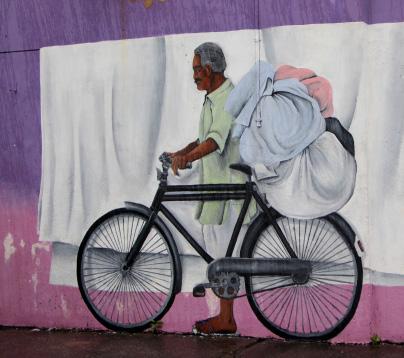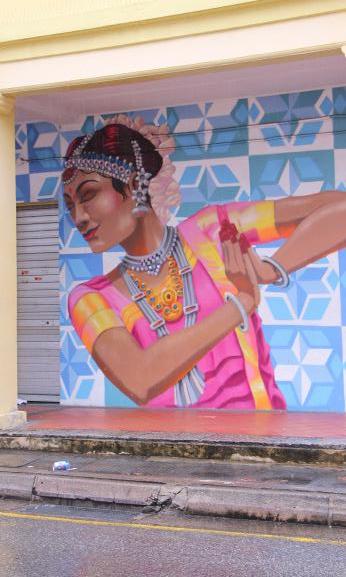
3 minute read
Hidden in Plain Sight - Little India
Discovering singapore's vibrant street art scene
by Jennifer Williams and Isabelle Tadmoury
Advertisement
There are few neighborhoods as distinctive as Little India. The colors, the flowers and the aroma of spices tickle the senses. During the Deepavali holidays in early November, Little India becomes especially magical. While there are plenty of reasons to visit, there also are a lot of murals and public art to discover.
We start our tour at the center, the House of Tan Teng Niah. This small villa with a rainbow of colors sits in the middle of food stalls and shops. It belonged to the owner of a prominent Chinese sweets-making factory that operated in the area. The wooden shutters and molding details that line the bottom of the roof give this house an architectural quality that is rarely found in other homes on the island.
Known as Little India since the 1980s, the area previously had been known as Serangoon, after Serangoon Road (one of Singapore’s earliest roads). It was a bustling crossroads of transport and commerce centered around the cattle and buffaloes that grazed and swam in the nearby mangrove swamps and Rochor River. The street names (such as Buffalo Street) retain these links to the past, as do the murals. On Kerbau Road (beside Little India MRT Station Exit E), “Cattleland” is a playful depiction of cows walking in the clouds and riding on bikes.

Cattleland
On the other end of the square from where the Tan house sits, a huge mural pays homage to the traditional trades of the Indian community, including garland making, parrot astrology and laundering (8 Bellios Lane). Note: Did you know that "Dhoby" is the Hindi term for laundry and "Ghaut" refers to the flight of steps leading down to a river? Hence, "Dhoby Ghaut" loosely translates as "laundry by the steps of a river," a far cry from the bustling mega-center that Dhoby Ghaut is today.

A washerman or dhobi
A short stroll to Upper Dickson Road takes you to an artist we’ve included in previous articles, Didier "Jaba" Mathieu (see our Kampong Glam edition). Here, Jaba has used his signature vibrant color scheme to portray the dancers of Kathak, a traditional Indian dance form that narrates stories and folklore.

Kathak dancer
Immediately past Jaba’s mural is "Loops of the Precious," by Priya Diayalan. It is a tribute to her grandfather, a goldsmith, another of the traditional trades of Little India. Around the corner, at the intersection of Dunlop and Clive Streets, is "Alive@Clive," a colorful portrayal of a traditional Indian dancer. The park across the street is filled with painted cattle and often hosts community events by Project Oasis.
Probably the epitome of artwork in the area, as well as the most popular among its residents, is "Working Class Hero," a depiction of famous Tamil film star, Rajinikanth. ZERO, the artist who painted it, conceptualized this mural with the purpose of painting it as a tribute to the migrant workers living in the district.

Working Class Hero
Before you leave this ‘hood, it's worth a quick stop to see "Ride Through Race Course Road," tucked away in a small passageway off Race Course Road. It tells the story of when there was a prestigious race course in the area, before the Singapore Turf Club relocated to Bukit Timah.

Ride Through Race Course Road
Our stroll through the public art of Little India reflects how the area's heritage and its modern influences have combined to form this unique Singaporean neighborhood. The area is covered with more art than this article can chronicle, so we suggest taking some detours to find more artwork on your own. Enjoy your visit!

Isabelle and Jennifer share a love of art, good coffee and exploring Singapore. Both came here in 2019 and are always on the lookout for the next great statue or mural that is just around the corner.










